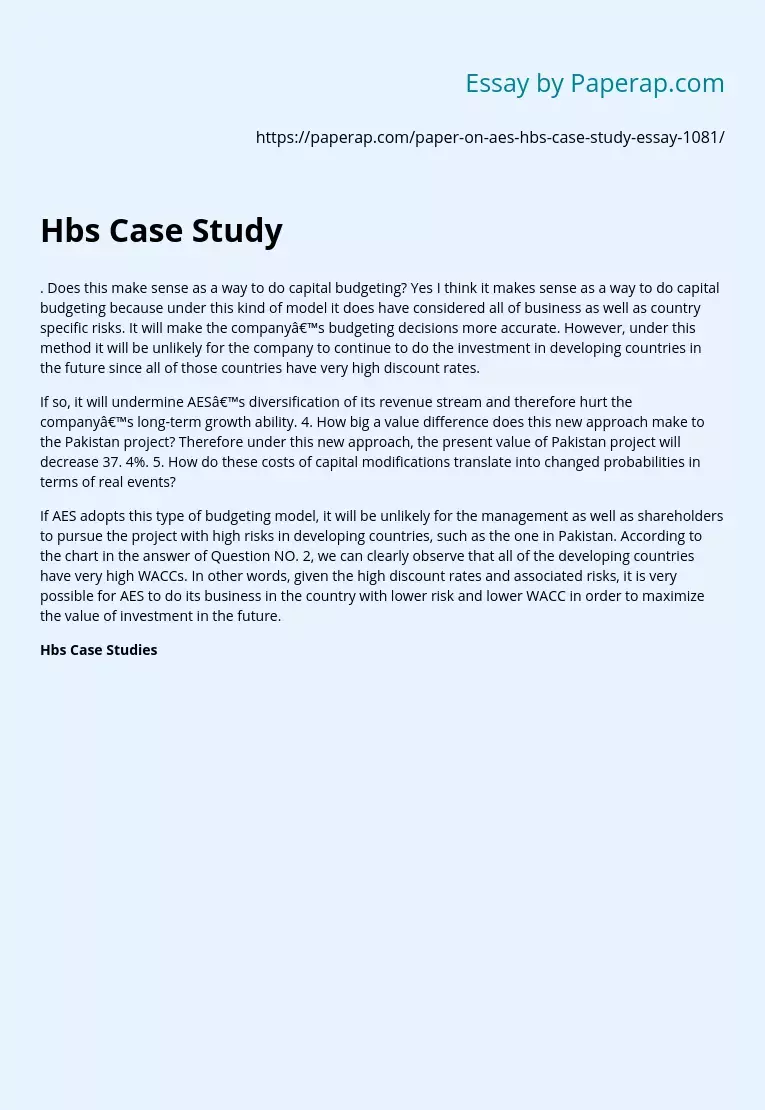Investing in Developing Countries: Sensible Capital Budgeting?
The following sample essay on Hbs Case Study tells about investment in developing countries.
Does this make sense as a way to do capital budgeting? Yes I think it makes sense as a way to do capital budgeting because under this kind of model it does have considered all of business as well as country specific risks. It will make the company’s budgeting decisions more accurate. However, under this method it will be unlikely for the company to continue to do the investment in developing countries in the future since all of those countries have very high discount rates.
If so, it will undermine AES’s diversification of its revenue stream and therefore hurt the company’s long-term growth ability. How big a value difference does this new approach make to the Pakistan project? Therefore under this new approach, the present value of Pakistan project will decrease 37. 4%. How do these costs of capital modifications translate into changed probabilities in terms of real events?
If AES adopts this type of budgeting model, it will be unlikely for the management as well as shareholders to pursue the project with high risks in developing countries, such as the one in Pakistan.
According to the chart in the answer of Question NO. 2, we can clearly observe that all of the developing countries have very high WACCs. In other words, given the high discount rates and associated risks, it is very possible for AES to do its business in the country with lower risk and lower WACC in order to maximize the value of investment in the future.
Hbs Case Studies
Investing in Developing Countries: Sensible Capital Budgeting?. (2019, Dec 05). Retrieved from https://paperap.com/paper-on-aes-hbs-case-study-essay-1081/

